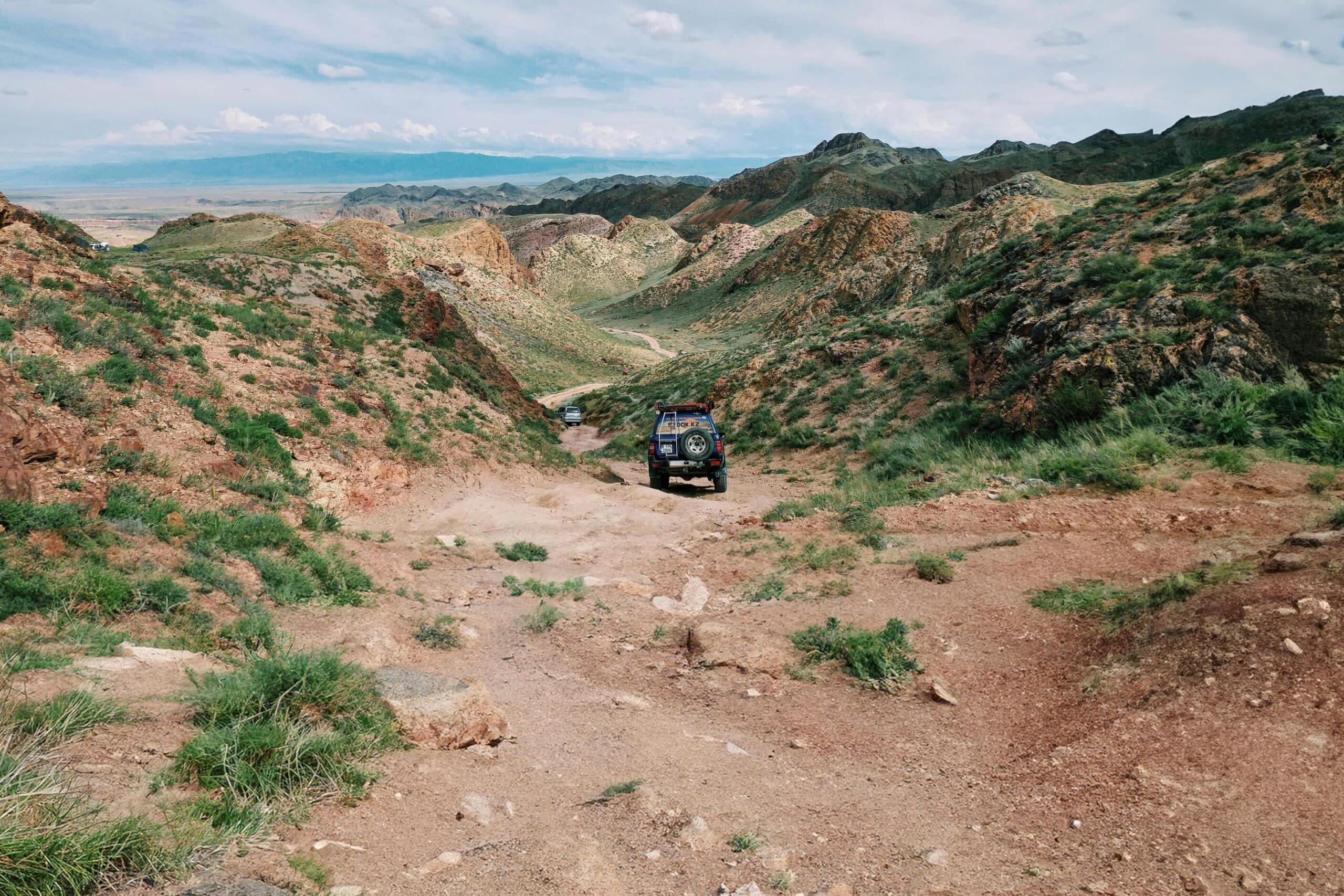
Off-roading vs. overlanding – differences in theory and practice.
Both go above driving limits and outside the mainstream way of spending free time. Although they are very similar, they are also different at the same time. Overlanding and offroad come from similar needs but are done in two different ways. What are the differences, what should you pay attention to when getting ready for overlanding? Read more below.
What is overlanding
To understand the difference, it’s good to start from the beginning. What does overlanding mean, and why it is mentioned with offroad very often? Simply speaking it means traveling by land. What really defines this activity is not where you travel to. But the journey itself, it’s lenght and how far your go. In overlanding, the trip and how you get to there are more important than the destination, which might not be clearly planned from the start.
Another important thing about this kind of travel is being independent from the outside world and being able to take care of yourself. This is why overlanding connected with personal growth, learning new skills, and building character. Such trips often mean discovering places no one has seen, sleeping under a sky full of stars, and getting to know new cultures. This teaches not only openness and tolerance but also humility.
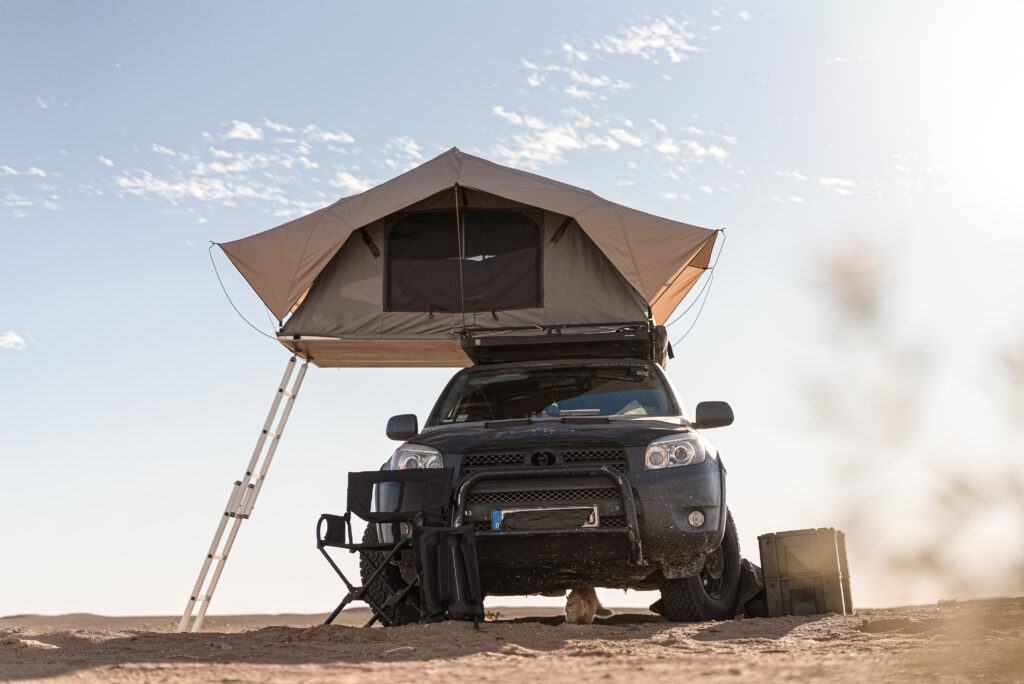
So, while a train trip from Barcelona to Madrid is definitely a journey, calling it overlanding would be too much. But a trip on the Trans-Siberian Railway fits the idea of overlanding better. However, what we’re really interested in is overlanding with four-wheel vehicles, or more precisely – 4×4.
Overlanding vs offroad
When we talk about overlanding or offroad, we usually mean using a four-wheel-drive off-road vehicle and driving where there are no roads. Even with these two things in common, the difference between this two is big. The main difference is why you’re going. In offroad, the focus is mainly on overcoming natural obstacles with your vehicle. So, it’s about testing what your car can do and your skills. Especially driving through mud, water, sand, valleys and in ruts.
Of course, you can face offroad challenges during an overlanding trip too. That’s why sometimes overlanding is just called an off-road journey. But offroad is more about short-term fun, often within a specific raid or crossing. It’s more about driving skills than tourism. So, getting ready for it means different things. Another equipment, accessories, and especially the vehicle’s characteristics.
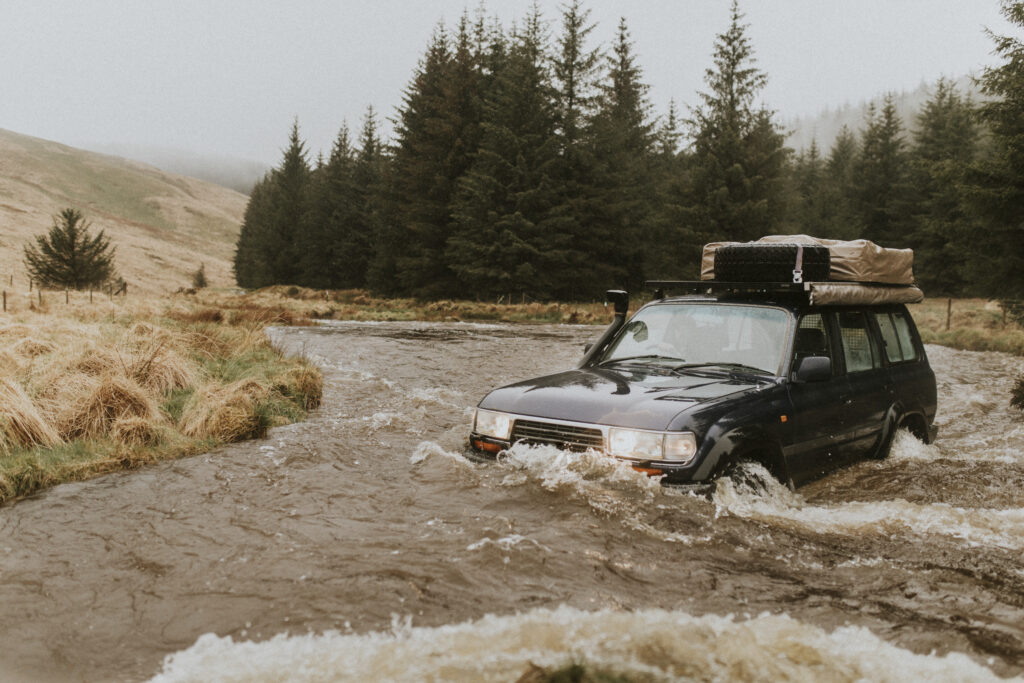
Car and modifications for overlanding
In extreme offroad, it’s key to see how strong and capable your car is. That’s why the most common choice is a traditional off-road vehicle with a solid axle, modified and lifted suspension and manual four-wheel drive with fitted off-road tires. What you really need is determined by how you use it.
So, because overlanding has a different focus on off-road driving, it needs different features. It depends on what you like, but a vehicle with independent or semi-independent suspension could make a long trip more comfortable. Just like automatic drive, which doesn’t need much work from you and automatically picks the right settings to the type of terrain and weather conditions.
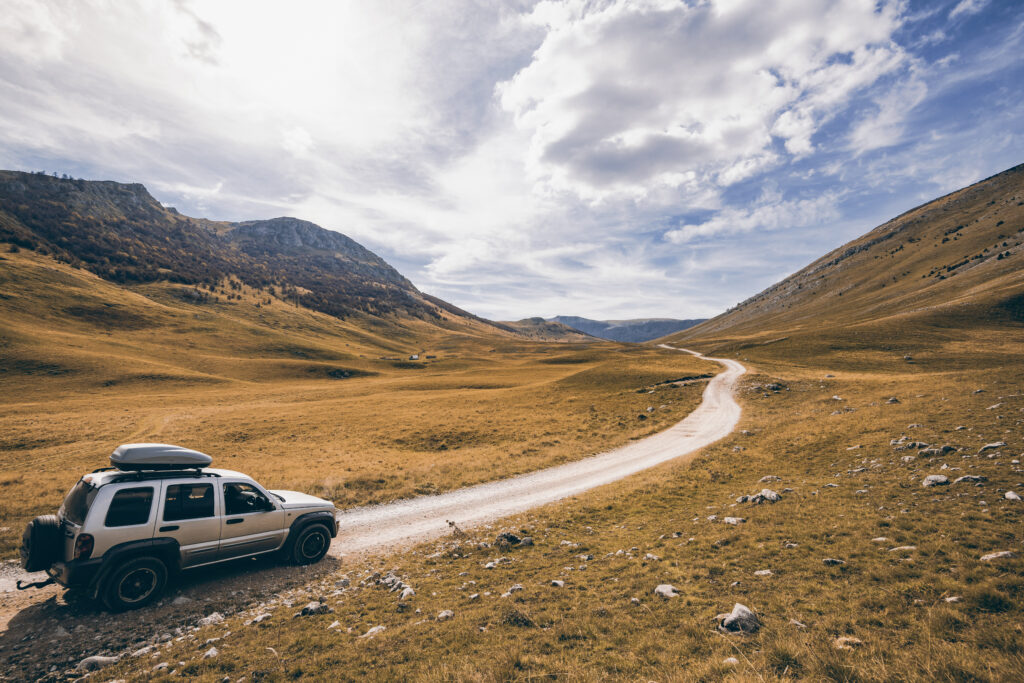
No doubts, the loading capacity of off-road vehicles, SUVs, campers, crossovers, and others is a big advantage for traveling on four wheels. This lets you set up your car in your own way or go for simpler changes, like installing a rooftop tent, water recovery system, solar panels, kitchen equipment, and all things that let you be totally free in the wild.
In the end, extra accessories and setups mean extra weight. So, lifting your vehicle and putting money into suitable coil springs is something you have to think about before a long trip.
Related articles
Car and offroad accessories useful for the trip
Now you know the basic car modifications and accessories which may be as different as our need let’s move to more universal stuff. But it’s smart to have tools that help you in unexpected situations or ensure your survival: like sand mats (traction board), shovel, trail axe, knife, hi-lift jack, first aid kit, and more) and pulling your car out if it gets stuck. We’re talking about winch and a very strong synthetic rope with d-ring. These items can help you get out of hard situations on your own. If you don’t have them, getting out of trouble could be much harder.
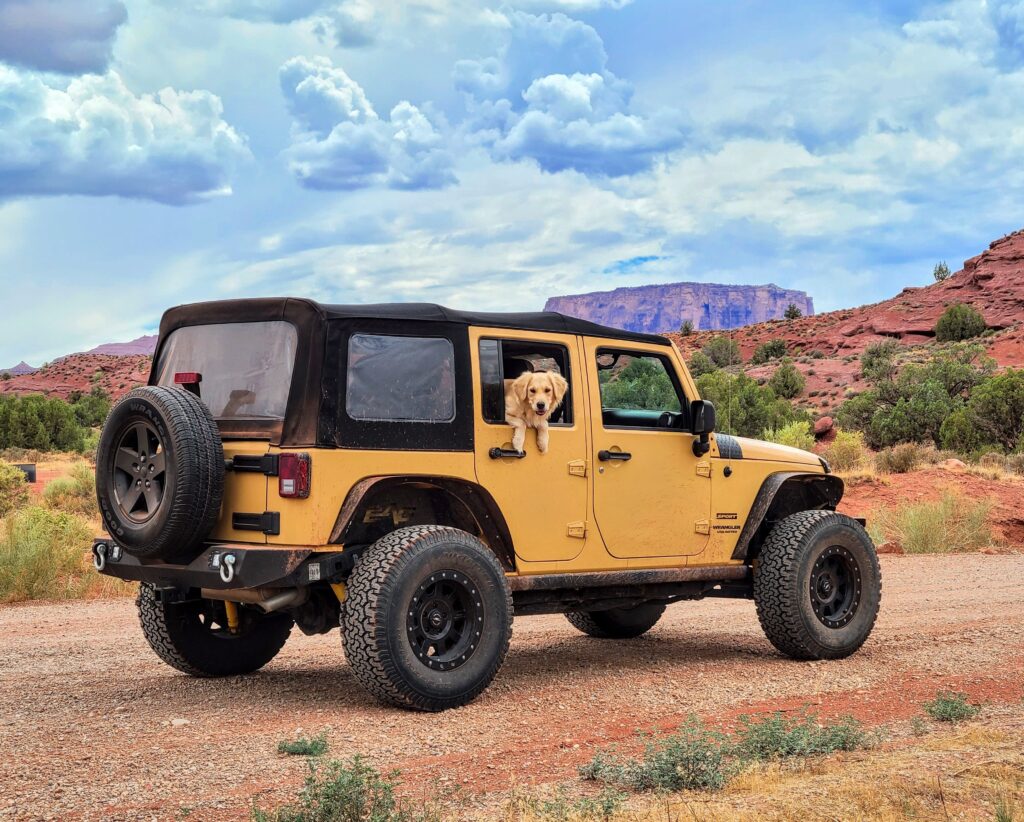
But even in really tricky situations, you might still need help from other people. If you’re with friends, or you know you’ll call someone for help when needed, using a kinetic rope instead of synthetic one can be much better and more effective.
You can learn more about what might help you and what you should get for overlanding in our guides: “How to prepare your car for overlanding journey” and “The best offroad recovery accesorries“.

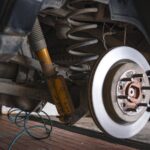
Comments ()